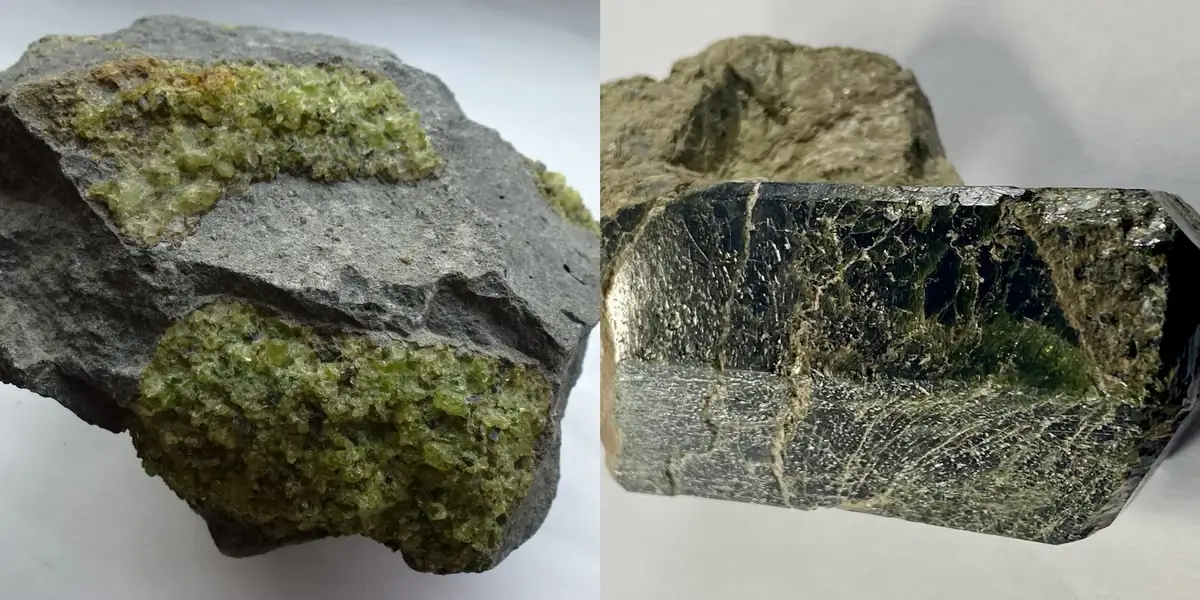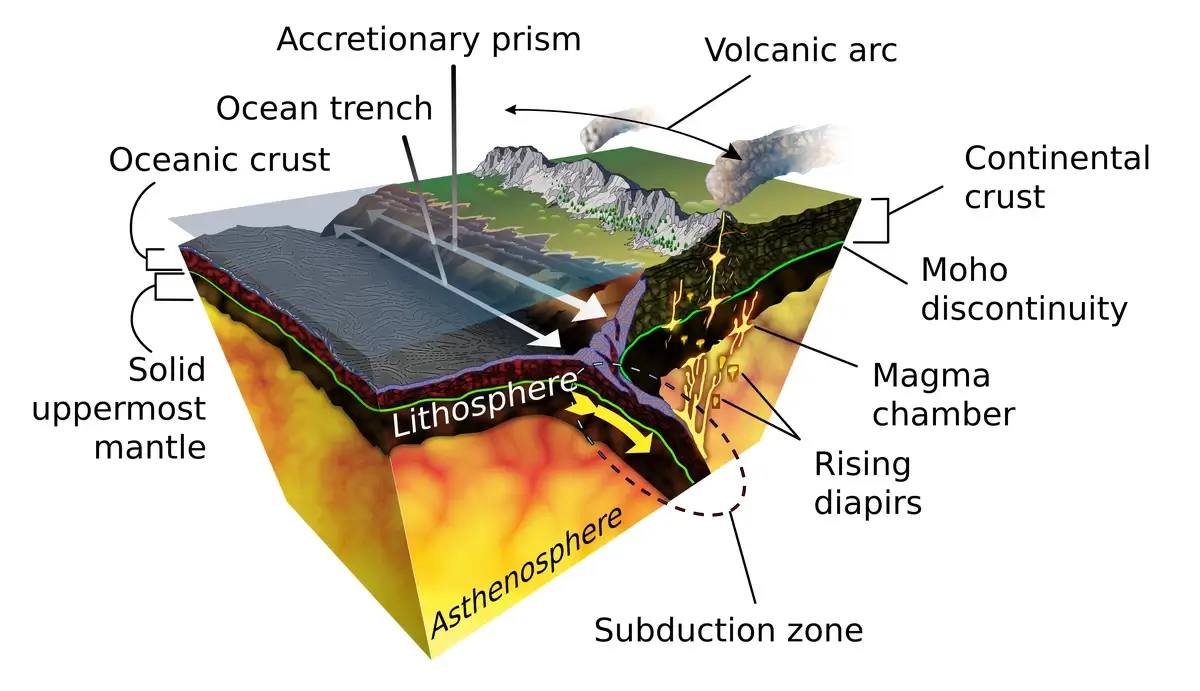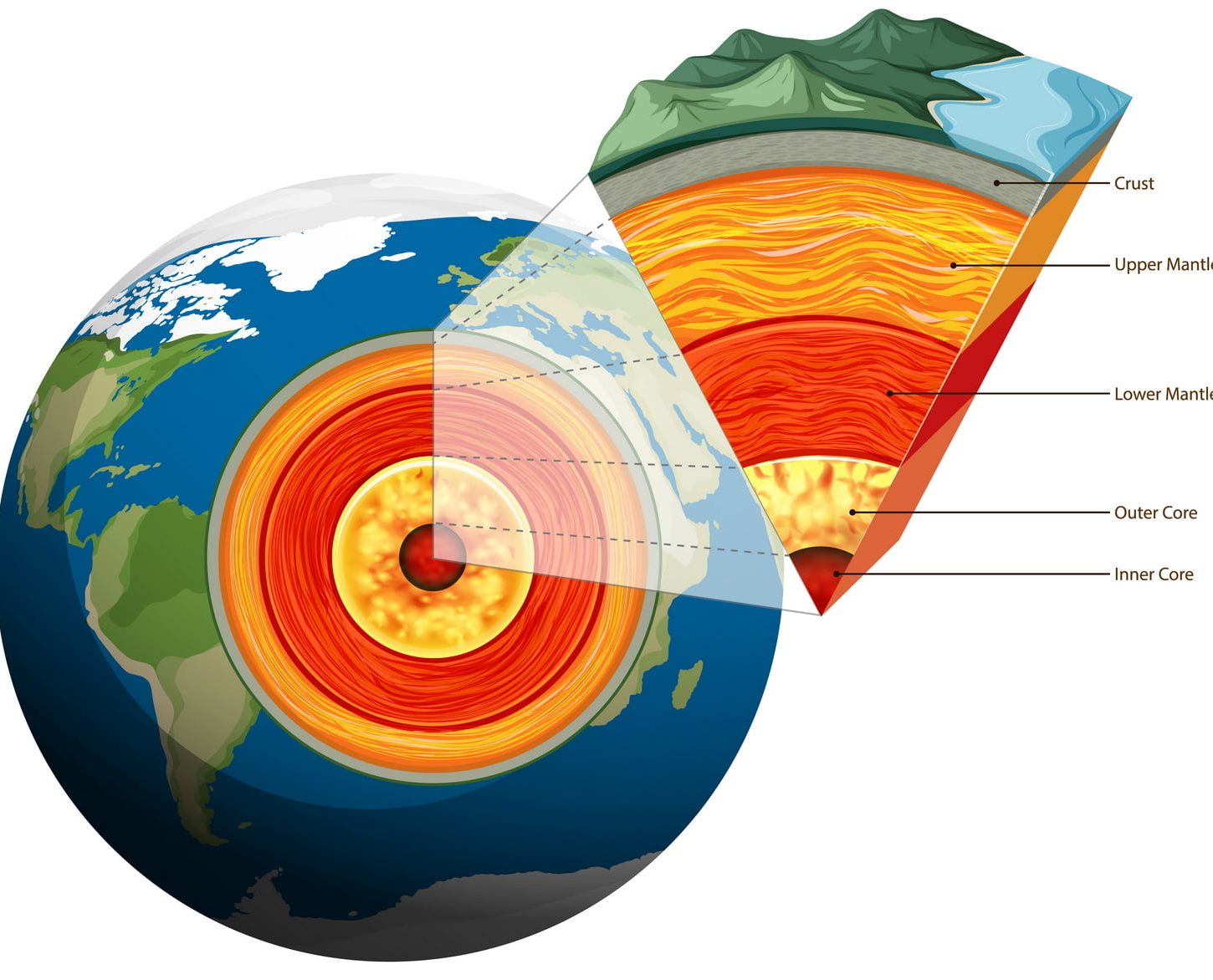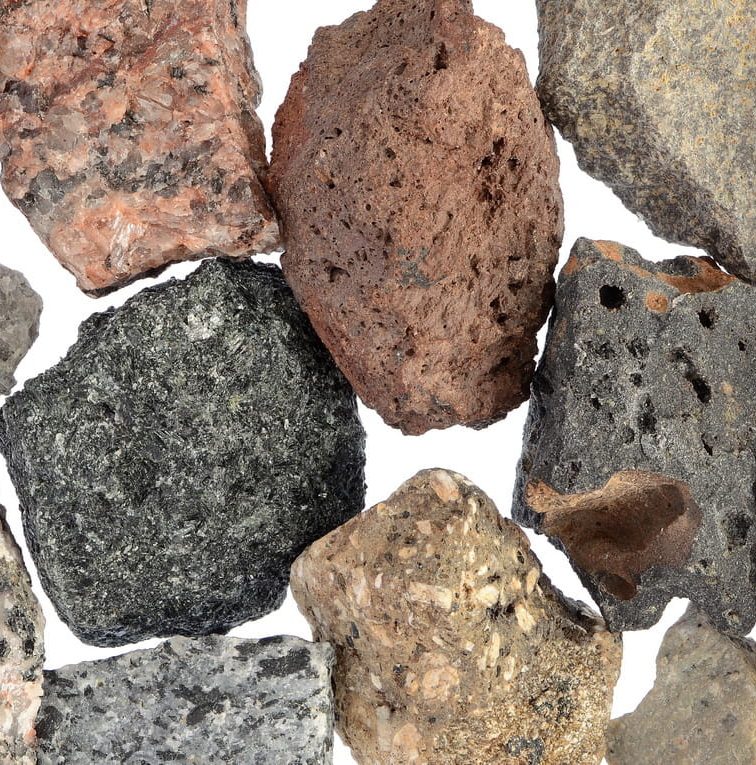Embark on a journey to uncover the secrets of the Earth’s mantle, an enigmatic layer beneath our feet. Accounting for 84% of Earth’s volume and extending over 2,900 kilometers deep, the mantle’s dynamic nature challenges our understanding of the planet.
Here, temperatures exceed 4,000°C, hotter than the Sun’s surface, driving the monumental forces of plate tectonics and volcanic eruptions. Surprisingly, it may contain more water, locked within minerals, than all the Earth’s oceans.
Let’s delve into these fun facts about the Earth’s mantle and explore the mysteries of this vast, unseen world.
1. The Earth’s Mantle: A Massive, Moving Layer
The Earth’s mantle, a colossal layer between the crust and the core, is far from static. Scientists estimate its movement to mere centimeters per year, akin to the rate at which human fingernails grow. This gradual but relentless movement significantly influences the shifting of tectonic plates, reshaping Earth’s surface over millions of years.
Remarkably, this concept of a mobile mantle was solidified in the 20th century with the advent of plate tectonics theory. Prior to this, the mantle was largely thought to be solid and immobile. The pioneering work of geologists like Alfred Wegener and Harry Hess helped establish the foundations of our current understanding, transforming our view of Earth’s inner dynamics.
2. Composition of the Mantle: More Than Just Rock
The Earth’s mantle is a marvel of complexity, both in composition and behavior. Comprising about 84% of Earth’s total volume, it’s primarily made of silicate minerals, including olivine and pyroxene. These minerals exist under extreme conditions, not as a solid rock, but in a viscous, semi-solid state.
The understanding of mantle composition has significantly evolved since the 19th century. Initial insights came from volcanic eruptions, which brought mantle material to the surface. The study of such materials, alongside advancements in seismic technology, has revealed the diverse mineral makeup of this vast layer, offering a window into Earth’s deep interior.

Olivine on the left and pyroxene on the right. Image: geologyscience.com / takosminerals.com
3. The Mantle’s Role in Plate Tectonics
The mantle is the powerhouse behind plate tectonics, a theory that revolutionized geology in the 1960s. It propels the movement of tectonic plates through convection currents – a process driven by the heat emanating from the Earth’s core. These currents cause the mantle material to move in a circular pattern, thus moving the plates resting on it.
The understanding of this process owes much to the work of scientists like J. Tuzo Wilson, who contributed to the development of the theory of plate tectonics. This concept not only explains the movement of continents but also the occurrence of earthquakes, volcanic activities, and the formation of mountain ranges.
4. Temperature Extremes: From Warm to Scorching Hot
The temperature within the Earth’s mantle varies dramatically, from about 500°C near the crust to over 4,000°C closer to the core. These temperatures increase with depth due to the pressure from the overlying rock and heat from the Earth’s core. The mantle’s extreme heat plays a crucial role in driving its convection currents.
The exploration of mantle temperature began earnestly in the 20th century with the development of seismic tomography and laboratory experiments replicating mantle conditions. These studies provide crucial insights into the mantle’s behavior, influencing our understanding of Earth’s geology and tectonics.
5. The Mantle’s Thickness: A Crucial Layer
The Earth’s mantle extends remarkably, ranging from about 35 kilometers beneath the oceanic crust to around 2,900 kilometers deep, adjacent to the outer core. This makes it the thickest layer of the Earth, accounting for a substantial portion of its volume. The mantle’s thickness is not uniform; it varies significantly between the oceanic and continental regions, influencing various geological processes.
The study of the mantle’s thickness has evolved over time with advancements in seismic technology. The ability to measure seismic waves generated by earthquakes has been instrumental in mapping out the mantle’s dimensions. This research is crucial for understanding not only the structure of the Earth but also the processes occurring within it, such as the formation of mountains and ocean basins.
6. Convection Currents: The Mantle’s Movers
Convection currents within the Earth’s mantle are the primary drivers of plate tectonics. These currents are generated by the immense heat emanating from the core, which causes the mantle material to become buoyant when heated and sink when cooled. This continuous cycle of rising and sinking material creates a flow that acts like a conveyor belt, moving the Earth’s tectonic plates.
The concept of mantle convection was first proposed in the early 20th century and has since become a fundamental aspect of understanding Earth’s geodynamics. The study of these currents not only helps explain the movement of tectonic plates but also aids in understanding the distribution of earthquakes, volcanic activity, and mountain building processes.
7. The Mantle’s Influence on Earthquakes
The mantle plays a significant role in the occurrence of earthquakes. While most earthquakes originate in the Earth’s crust, the mantle’s movements can influence their frequency and intensity. The convection currents in the mantle, which drive the movement of tectonic plates, can lead to the buildup of stress along plate boundaries, resulting in earthquakes.
Advanced seismic studies in the 20th and 21st centuries have shed light on how deeper sections of the mantle, especially the transition zone between the upper and lower mantle, can affect earthquake dynamics. Understanding the mantle’s role in earthquakes is crucial for seismic hazard assessment and helps in predicting potential earthquake zones.
8. Mantle Plumes: Hotspots Creating Islands
Mantle plumes are upwellings of abnormally hot rock within the Earth’s mantle. These plumes rise through the mantle and can create volcanic hotspots, which are often responsible for the formation of island chains like the Hawaiian Islands. The concept of mantle plumes was first proposed in the 1970s and has since been a topic of extensive research.
Mantle plumes are thought to originate at the boundary between the Earth’s core and mantle and can remain stationary for millions of years. As a tectonic plate moves over a plume, a series of volcanoes can form, leaving a trail of islands and underwater mountains. This process offers insight into the dynamic nature of the Earth’s interior and its surface evolution.

Aerial view of the Hawaiian Islands, formed by mantle plumes. Image: thoughtco.com
9. The Age of the Mantle: Earth’s Historical Keeper
The Earth’s mantle is as old as the planet itself, roughly 4.5 billion years, making it an invaluable record keeper of Earth’s geological history. The study of mantle composition, particularly through the analysis of isotopes, provides insights into the early formation and evolution of the Earth.
Research in the 20th and 21st centuries, particularly in the field of geochemistry, has revealed that parts of the mantle have remained largely unchanged for billions of years. This makes the mantle a unique archive, offering clues about the early Earth, including the conditions that led to the formation of the continents and oceans.
10. Mantle Xenoliths: Bringing the Mantle to Surface
Mantle xenoliths are fragments of the Earth’s mantle that are brought to the surface through volcanic eruptions. These rare samples provide a direct glimpse into the composition and conditions of the deep Earth, otherwise inaccessible for direct study. The study of xenoliths gained significant traction in the 20th century, offering insights into the mineralogy and geochemistry of the mantle.
Most xenoliths are composed of peridotite, a dense, greenish rock made primarily of olivine and pyroxenes. By analyzing these xenoliths, geologists have been able to infer the temperature, pressure, and even the age of different parts of the mantle. This information is crucial in understanding mantle dynamics and the processes that drive plate tectonics and volcanic activity.
11. Mantle Composition Variations: Diversity Underground
The Earth’s mantle is not a uniform layer; it exhibits significant compositional variations at different depths and locations. The upper mantle, extending to about 410 kilometers depth, is predominantly made of peridotite. Deeper into the lower mantle, the composition changes, with an increase in minerals like bridgmanite and ferropericlase, which can withstand the extreme pressures.
These variations were largely discovered through seismic studies and the analysis of mantle xenoliths and diamonds, which sometimes carry deep-mantle minerals to the surface. Understanding these compositional differences is vital for comprehending mantle convection, the formation of volcanic hotspots, and the creation of mineral resources.
12. Pressure in the Mantle: An Intense Squeeze
The pressure within the Earth’s mantle increases dramatically with depth, reaching about 136 gigapascals (nearly 1.3 million times atmospheric pressure) near the boundary with the outer core. This immense pressure, coupled with high temperatures, causes significant changes in the behavior of mantle rocks and minerals, affecting their physical and chemical properties.
These extreme conditions were first inferred through seismic data and later confirmed through laboratory experiments simulating mantle conditions. Understanding the pressure regimes in the mantle is crucial for grasping the mechanisms of mantle convection, mineral formation, and seismic wave propagation through the Earth.
13. Mantle and the Magnetic Field: An Unseen Force
While the Earth’s magnetic field is generated by the outer core, the mantle plays a crucial role in its behavior. The mantle’s composition and structure affect the way the magnetic field propagates through it to reach the Earth’s surface. This relationship became clearer with advancements in geomagnetism in the 20th century.
The electrical conductivity of the mantle, although much lower than that of the core, influences the magnetic field. This conductivity varies with temperature, composition, and water content in the mantle. Understanding this complex interaction helps in studying the Earth’s magnetic field variations and its impact on satellite and communication technologies.

Image: ncei.noaa.gov
14. Diamond Formation: A Mantle Miracle
Diamonds, those dazzling gems, are born under the extreme pressure and temperature conditions of the Earth’s mantle. They form at depths of about 150 to 200 kilometers and are brought to the surface by deep-source volcanic eruptions, encapsulated in rocks known as kimberlites and lamproites. The process of diamond formation was largely unraveled in the 20th century through geological and mineralogical research.
The conditions in the mantle lead to the transformation of carbon into diamond – a process that can take over a billion years. Studying diamonds provides not only insights into the deep Earth processes but also information about the age and composition of different parts of the mantle.
15. The Mantle’s Water: Earth’s Hidden Ocean
The presence of water in the Earth’s mantle, particularly in the form of hydroxyl groups within minerals, has been a topic of considerable interest and research. This water, unlike the oceans on the surface, is trapped within the mantle rocks and minerals. Recent studies suggest there could be more water in the mantle than in all the Earth’s oceans combined.
The discovery of water in the mantle significantly impacts our understanding of mantle dynamics, volcanic activity, and the formation of continental crust. It’s believed that this water affects the melting point of mantle rocks, influencing the movement of magma and the development of plate tectonics. This “hidden ocean” within the Earth plays a crucial role in the global water cycle and Earth’s geology.
16. Mantle’s Chemical Layers: A Complex Structure
The Earth’s mantle is composed of several chemical layers, each with distinct properties and compositions. These layers include the upper mantle, transition zone, lower mantle, and the D″ layer just above the core-mantle boundary. The upper mantle consists mainly of peridotite, a rock made of silicate minerals like olivine and pyroxene, while the lower mantle is dominated by minerals like bridgmanite.
Understanding these chemical layers is key to grasping the mantle’s role in plate tectonics and the formation of geological features. The transition zone, for instance, may contain minerals that can hold significant amounts of water, influencing mantle convection and magma formation. This intricate layering reveals much about the Earth’s internal processes and its geological history.
17. Studying the Mantle: The Seismic Wave Guide
Seismic waves, generated by earthquakes, are invaluable tools for studying the Earth’s mantle. These waves travel through the Earth and are affected by the properties of the materials they pass through, providing critical information about the mantle’s composition, temperature, and structure. The development of seismic tomography has been particularly groundbreaking, allowing scientists to create 3D models of the mantle.
This method has revealed much about the mantle’s heterogeneity and the dynamics of mantle convection. By analyzing how seismic waves speed up, slow down, or change direction, geologists can infer the presence of different minerals, temperature variations, and even the flow patterns within the mantle. This research is fundamental to our understanding of Earth’s interior.
18. Mantle Vs. Crust: Understanding the Differences
The Earth’s mantle and crust are distinctly different layers, each with unique characteristics. The crust is the Earth’s outermost layer, solid, relatively thin, and composed mainly of lighter silicate rocks like granite and basalt. In contrast, the mantle lies directly beneath the crust, is much thicker, and consists mostly of denser, magnesium- and iron-rich silicate rocks like peridotite.
These differences in composition and density are crucial for understanding processes like isostasy, which explains how different parts of Earth’s crust float on the semi-fluid upper mantle. The interface between the crust and mantle, known as the Mohorovičić discontinuity or “Moho,” marks a significant change in seismic wave velocities, reflecting the contrast in material properties between these two layers.

Image: Wikimedia Commons
19. The Mantle’s Role in Volcanic Activity
Volcanic activity is deeply intertwined with the processes occurring in the Earth’s mantle. The mantle is the primary source of the magma that feeds volcanoes. This magma is generated when mantle rocks melt, a process influenced by factors such as temperature, pressure, and the presence of water. As the mantle moves and convection currents circulate, hotspots and mid-ocean ridges can form, leading to volcanic eruptions.
This connection between the mantle and volcanism has been a focus of geological studies since the 20th century. The study of mantle plumes, for instance, has helped explain the formation of volcanic island chains, such as Hawaii and Iceland. The mantle’s role in volcanic activity is not only a fascinating aspect of Earth’s geodynamics but also a crucial element in understanding the planet’s surface formation and the recycling of its crust.
20. Mantle’s Future: Shaping Earth’s Evolution
The future of the Earth’s mantle and its ongoing influence on our planet’s evolution remains a subject of scientific speculation and study. The mantle, being a key driver of plate tectonics, will continue to shape the Earth’s surface for billions of years to come. Its movements will lead to the formation of new mountains, ocean basins, and continents, as well as the closure of existing ones.
The mantle’s future also ties into the planet’s thermal evolution. As the Earth gradually cools, the mantle’s convection processes might slow down, potentially leading to changes in tectonic activities. This evolution will have profound implications for the Earth’s magnetic field, climate, and surface stability. Understanding the mantle’s future helps scientists predict how our planet will continue to change and the long-term impacts of these changes on the environment and life on Earth.
FAQ
How old is the earth’s mantle?
The Earth’s mantle is as old as the planet itself, approximately 4.5 billion years. This dating is based on the age of meteorites and the oldest minerals found on Earth, zircon crystals, which provide clues to the formation and early history of the planet. The mantle has undergone continual changes and processes since Earth’s formation, making it a historical record of the planet’s geologic past.
Is the mantle like lava?
The mantle is not like lava in its typical state. While lava is molten rock that has erupted onto the Earth’s surface, the mantle is predominantly solid but behaves plastically due to the extreme pressures and temperatures it experiences. However, parts of the mantle can melt under certain conditions, such as lower pressure or higher water content, producing magma, which can rise to the surface and become lava during volcanic eruptions.
Has anyone seen the mantle?
No one has directly seen the Earth’s mantle, as it lies beneath the Earth’s crust, ranging from 35 kilometers to 2,900 kilometers below the surface. Our knowledge of the mantle comes from indirect observations like seismic studies, analysis of mantle xenoliths (rock fragments brought up by volcanic activity), and laboratory experiments simulating mantle conditions.
Why is the mantle so hot?
The mantle’s high temperature, which can exceed 4,000°C near the core-mantle boundary, is primarily due to two factors: the residual heat from the formation of the Earth and the heat generated by the radioactive decay of elements such as uranium, thorium, and potassium within the mantle. These heat sources drive the mantle’s dynamic processes, including convection currents and plate tectonics.
How important is the mantle?
The mantle is extremely important in shaping the Earth’s surface and its geological activities. It is responsible for the movement of tectonic plates, which leads to the formation of mountains, ocean basins, and volcanic activity. The mantle also influences the Earth’s magnetic field and contributes to the thermal balance of the planet.
Is the mantle the thickest layer?
Yes, the mantle is the thickest layer of the Earth. It extends from just beneath the crust to the outer core, making up about 84% of Earth’s volume. Its thickness varies, being thinner beneath the oceanic crust and thicker beneath the continental crust, but overall, it significantly exceeds the thickness of both the crust and the core.







